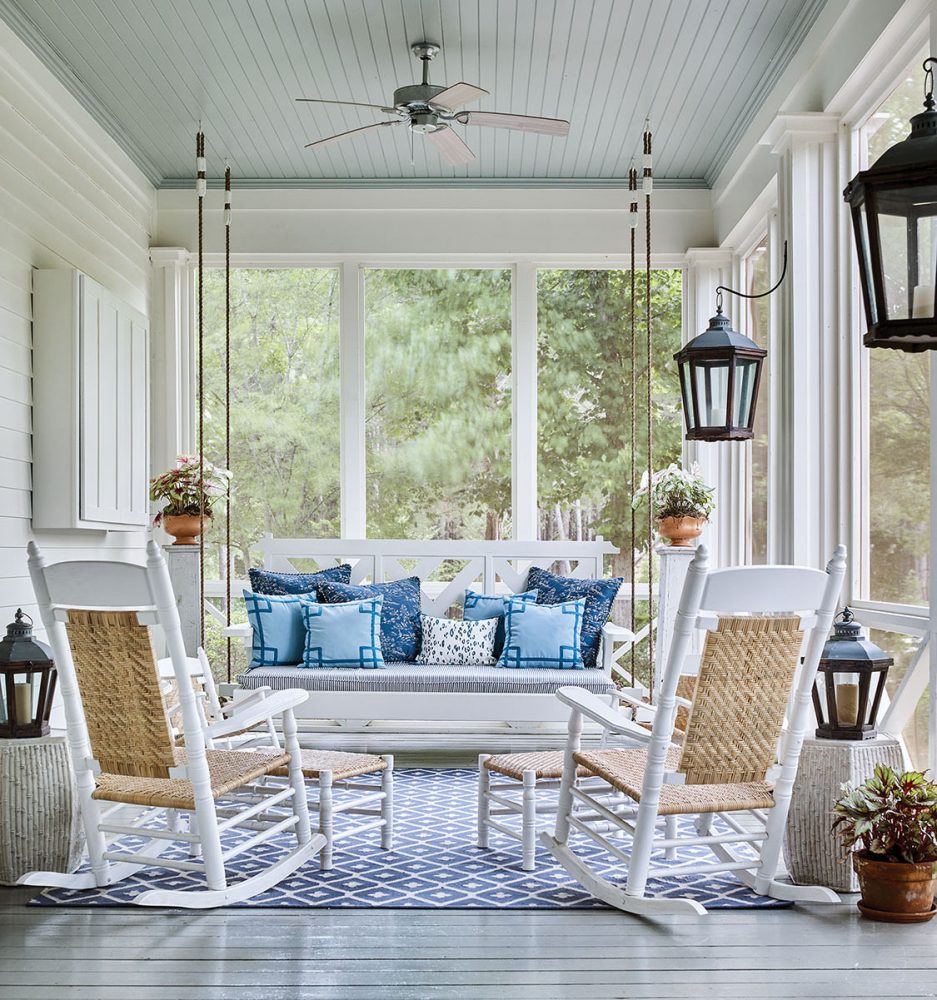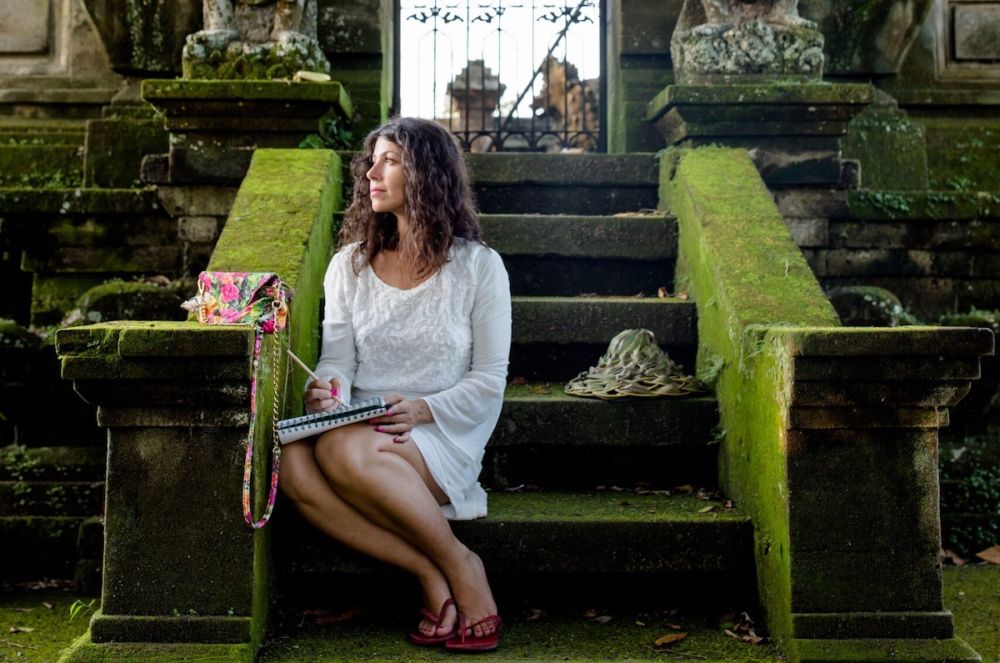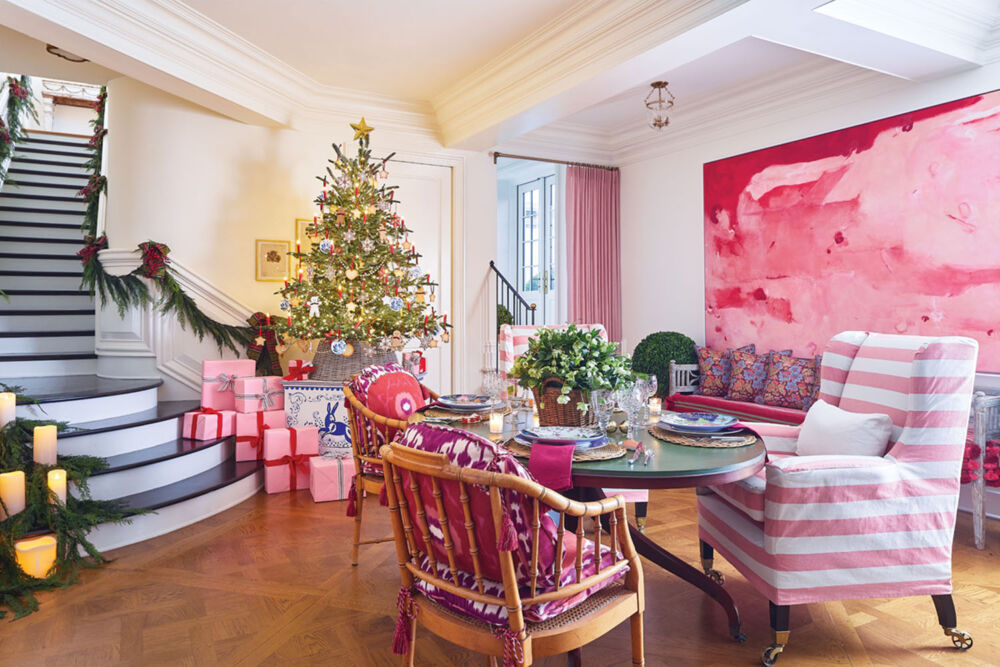Jacksonville designer Nellie Howard Ossi began her design path sitting backseat in a van and in the back room of a design firm. The experiences shaped her into a dynamic entrepreneur with a robust portfolio to show for it. FLOWER contributor Ashley Hotham Cox sat down with Nellie following the High Point launch of her new collection, Nellie Jane for Mr. & Mrs. Howard with Sherrill. They talked about her journey so far and what’s down the road.
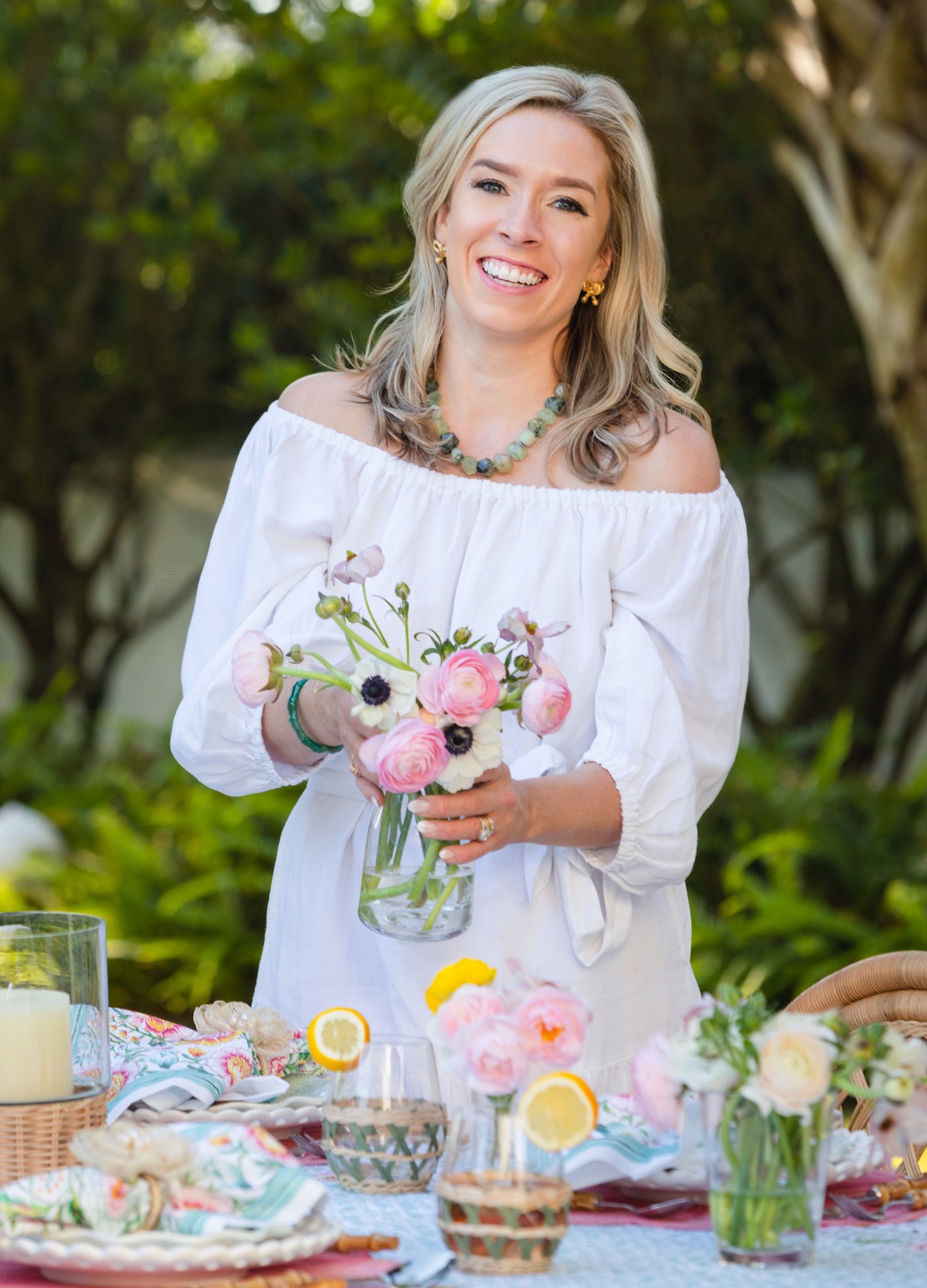
Nellie has brought her own youthful spin to the Howard line by adding feminine finishes and pastel colors. Photo by Muriel Silva
FLOWER: Born of two creatives, it seems you were destined to become a designer. Can you share a bit about your upbringing and the influences that inform your design approach today?
Nellie Howard Ossi: I was raised quite literally in the back of one of our stores. I was seven when they [Jim and Phoebe Howard] started the company, so every day after school, I would get dropped off by the school bus at our first store location. My mom had a little room for me to go in. And every single day, I went to the shop. So I do feel like I was literally raised there. And also, one of my funniest and fondest childhood memories is every summer, we would go on what my parents would call an “adventure vacation.” And we would go to North Carolina, and they’d plan all these fun, kid things to do. Like we would go gem mining and all that stuff, but really there’s always an antique store trip or more involved in the trip. My mom had this big van, so what they would do when they would buy antiques, they would fold the seats down and flip up tables and different things and make a fort out of it. And I would think it was the coolest thing.”
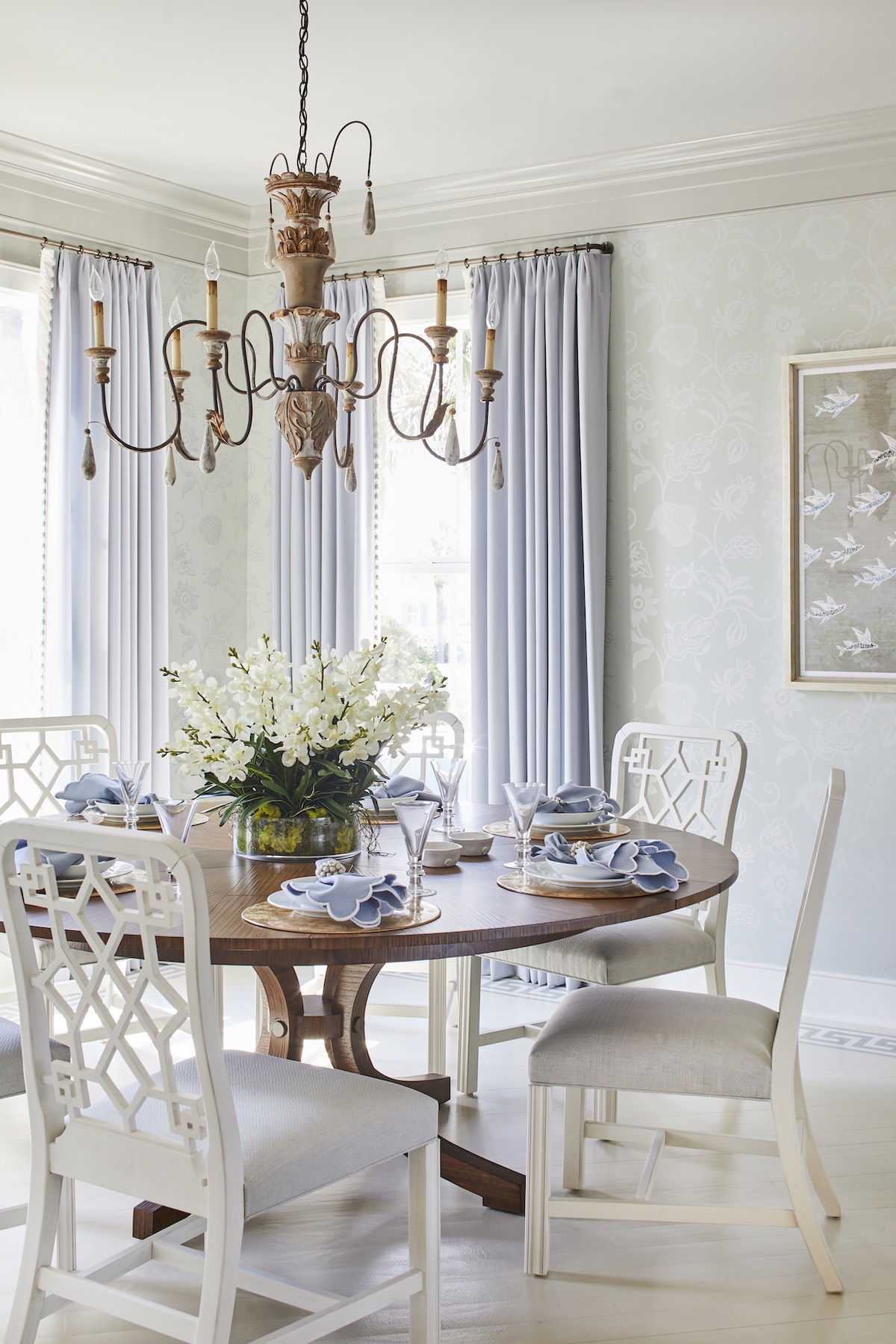
Photo by Laurey Glenn
In this Ponte Vedra, Florida, dining room, Nellie opted for Century chairs and covered them in Pierre Frey fabric. The table is by Theodore Alexander.
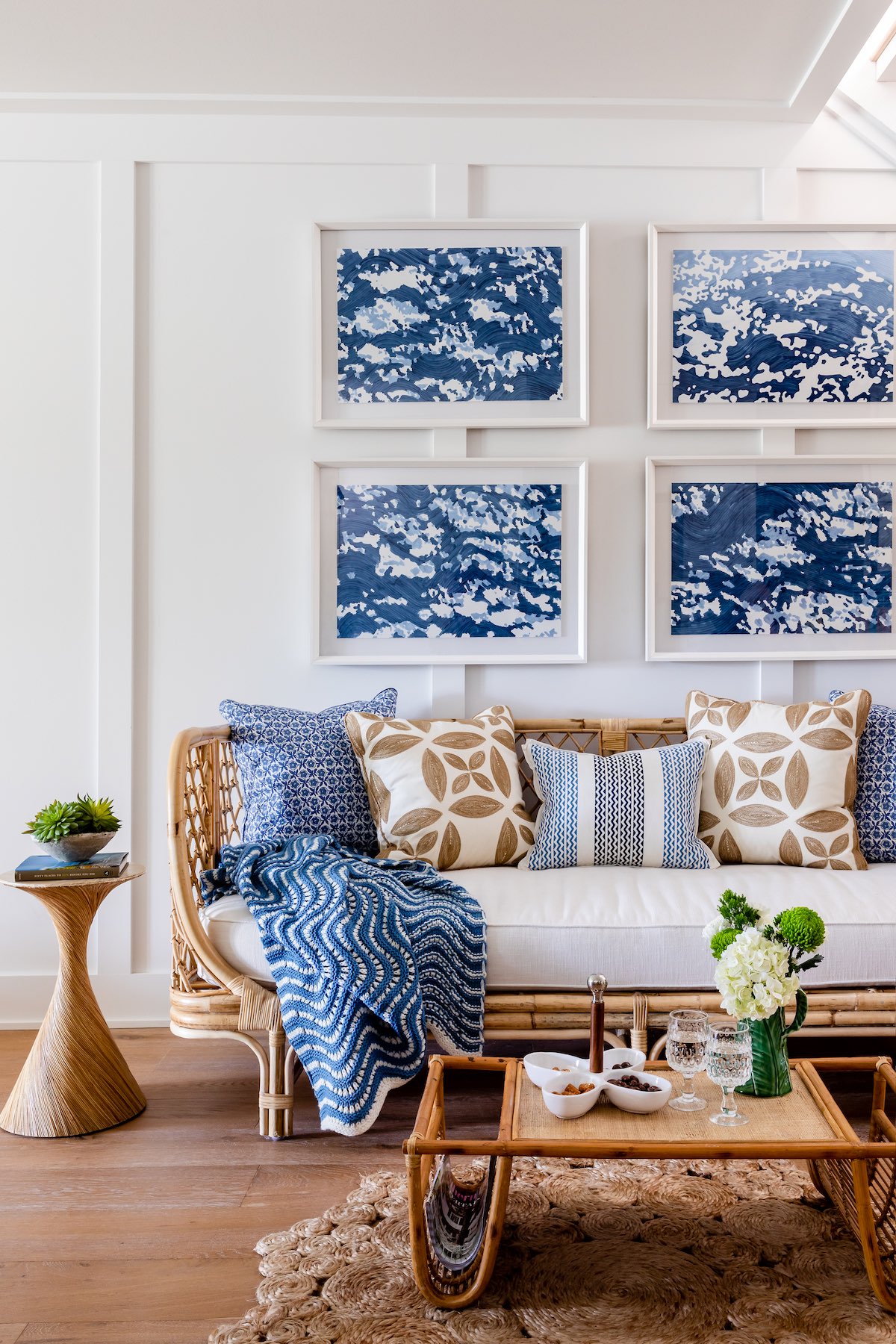
Photo by Muriel Silva
As a native Floridian, designer Nellie Howard Ossi has a flair for designing coastal chic spaces. In this lounge area, she opted for a daybed, purchased through Etsy and then recovered the cushion and added Manuel Canovas and Raoul Textile throw pillows. The drink table is by Gabby Home. The artwork is Dappled Waves from Wendover Art Group.
Did you have any formal training, or would you consider your background as a design immersion program in itself?
You know, it’s definitely because I grew up in it that I kind of had a good premise of installations and job site visits and things like that because I did that with my parents growing up. So in a way, it did have some feeling of second nature, but I was completely green. My mom calls our training “baptism by fire.” You’re just sort of thrown in, and if you survive, you survive. And honestly, it’s the only way to really do it. No one really teaches you in school how to shade a lamp, how to properly make a bed, how many pillows go on a sofa, what kind of trim to use. That’s something you sort of have to learn on the job site. That’s all field training that I learned by working for our stores.
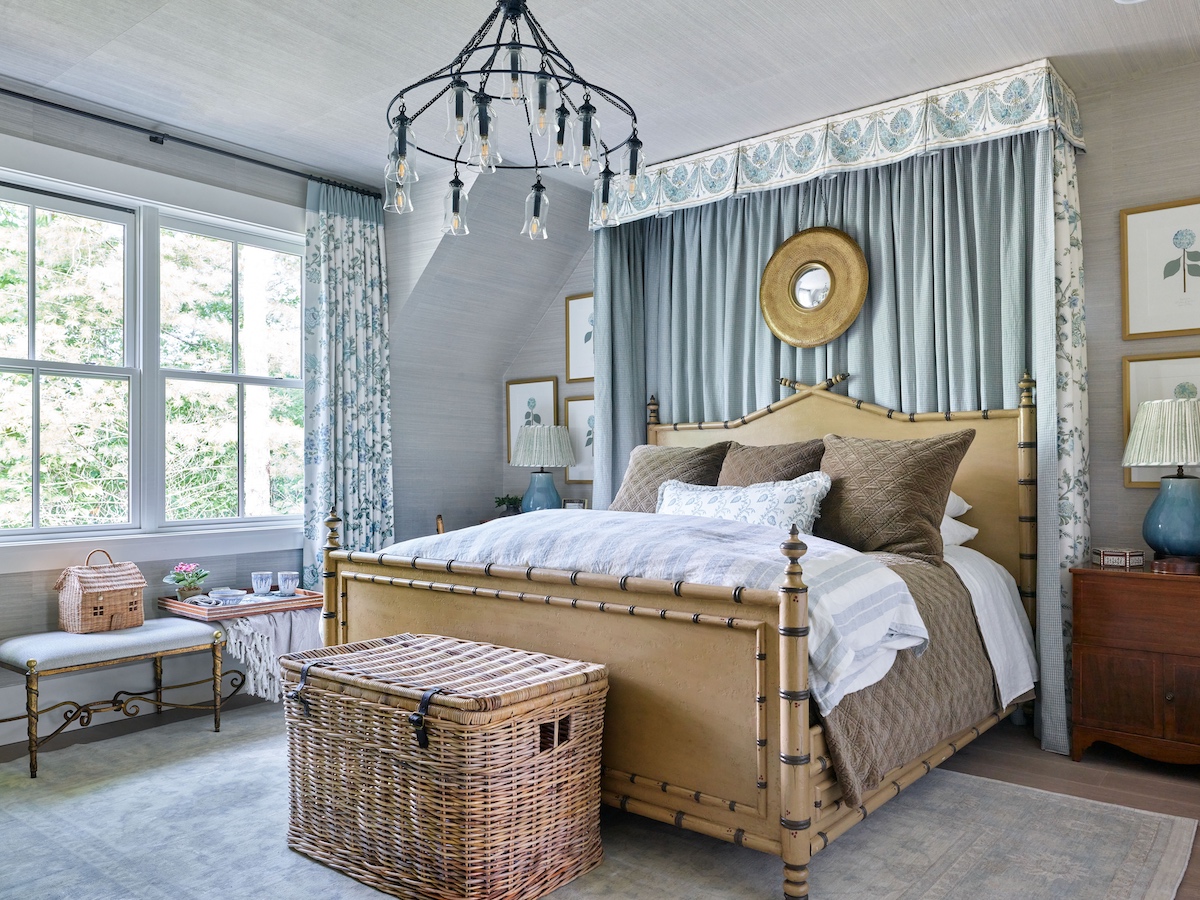
Photo by Davis Christensen
For the bedroom she designed for the Cashiers showhouse, Nellie had Bob Christian paint the Mr. and Mrs. Howard Bambu bed. The bench is an antique covered in a Colefax fabric. Hanging above is the Sara chandelier by Canopy Designs, one of Nellie’s all-time favorite fixtures and is now discontinued. The art is custom Lauren Lachance botanicals.
Was there a pivotal moment when you knew you were ready to leave the nest and go out on your own? Or was it a natural departure?
I would say it was a natural departure that just happened organically. I started taking on my own projects about five years into working for the firm. I would maybe get one big job of my own a year, and there was a lot of pride in that. And so I would just naturally start picking up more and more. It kind of evolved to where it is now. So my role now is like six full-time jobs. I’m managing and buying for our Jacksonville Beach store, doing my own decorating and design projects all over the country, working with Sherrill, and I still work with and manage some of Phoebe’s larger-scale clientele. I’m a very dynamic person. I could never just do an office job, so to me, this is kind of the ideal situation of doing a hundred different things every day.
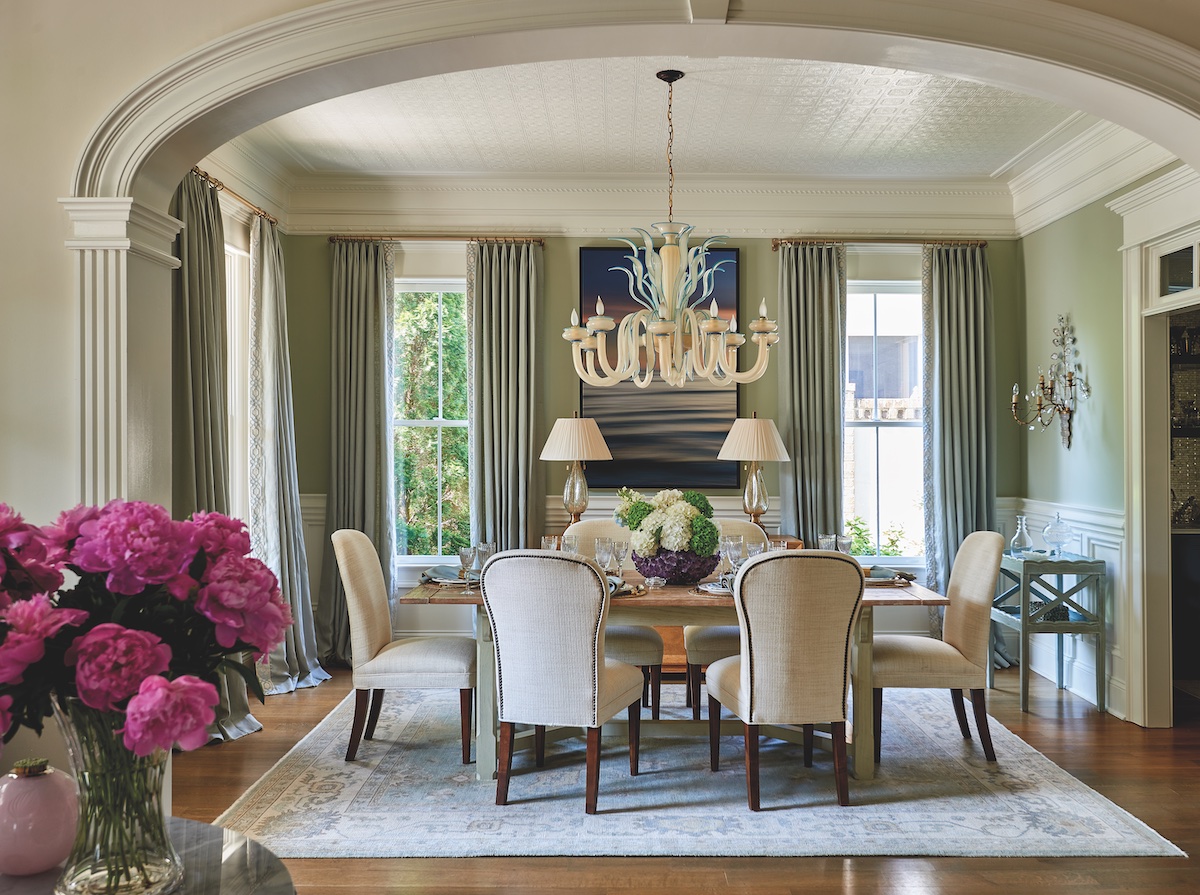
Photo by Dustin Peck
For this Raleigh, North Carolina project, Nellie designed the dining room using Chippendale chairs and the Piedmont table from Hickory Chair. The curtain fabric is by Romo; the antique rug was sourced through Moattar; and the light fixture is an antique Murano glass chandelier.
How would you describe your aesthetic?
I feel I’ve been niched into being a grandmillennial designer, but I don’t really feel that way. I consider myself more of a Southern traditionalist updated for today’s modern conveniences with a little injection of femininity. I feel like what I like and what I try to do is a little bit more refined in the sense that it’s not so sweet. I try to identify what it was from the past that has staying power.
Can you describe your approach when working with clients? And how does that differ when you’re designing for a showhouse?
I always ask about their lifestyle first. Do they have kids, pets, grandkids? Do they entertain? Do they host family or overnight guests often? I’ve learned that every single client has different needs for their homes, and it’s important to make sure that their house can function as they need it to while still being beautiful. As far as showhouses go, it’s totally different! It’s a carte blanche for me. So I get to do things that I want to do, but I also try to encourage myself to go outside my box. For example, I think we all know I love the color blue. So for an upcoming showhouse, I decided to go rogue and do red. I’m actually not particularly fond of a lot of red, but something about this just felt right, and I’m really excited for the turnout.
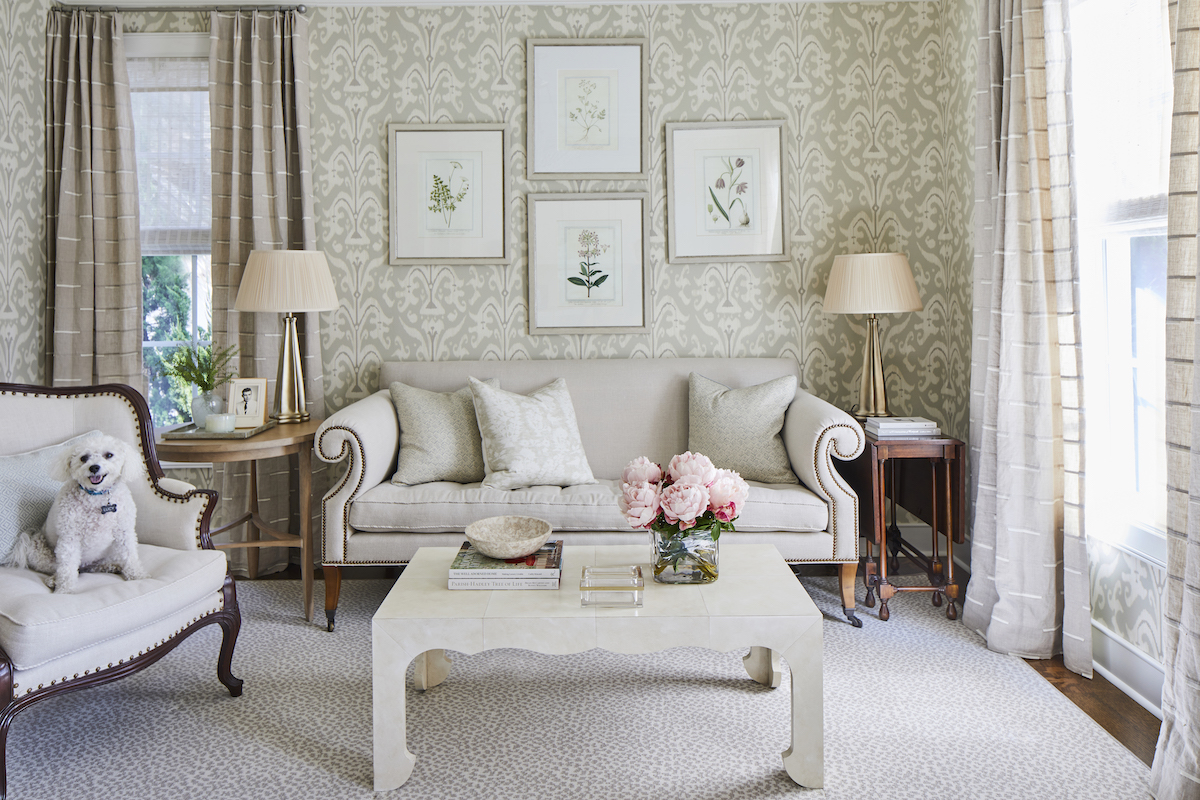
Photo by Laurey Glenn
Nellie transformed her client’s office space into a relaxing sitting area. The coffee table is the Paris from Mr. and Mrs. Howard for Sherrill. The rug is Kubra by Stark. Nellie custom printed and framed the botanical art
You just launched your first furniture collection for Mr. and Mrs. Howard. Can you tell us about the inspiration behind it and what the product design process was like?
I thought, why make these pieces in our custom upholstery shop when we can use Sherrill instead? So some of the pieces were ones that I’ve used before for projects, and now they’re much more accessible. I also wanted to revive the skirt. Box pleats, ruffles, scallops, I feel there is so much personality in a skirt, and it can totally transform a piece. It was also important to include practicality. I incorporated tons of performance fabrics and also hidden storage in several of the pieces.
Of the 15-piece collection, which is your favorite and why?
That’s like naming a favorite child! For my case products, I really love the Dana cocktail table. For upholstery, I have to say I love the Phoebe loveseat. Not only for obvious reasons, but I really do think she’s super chic!
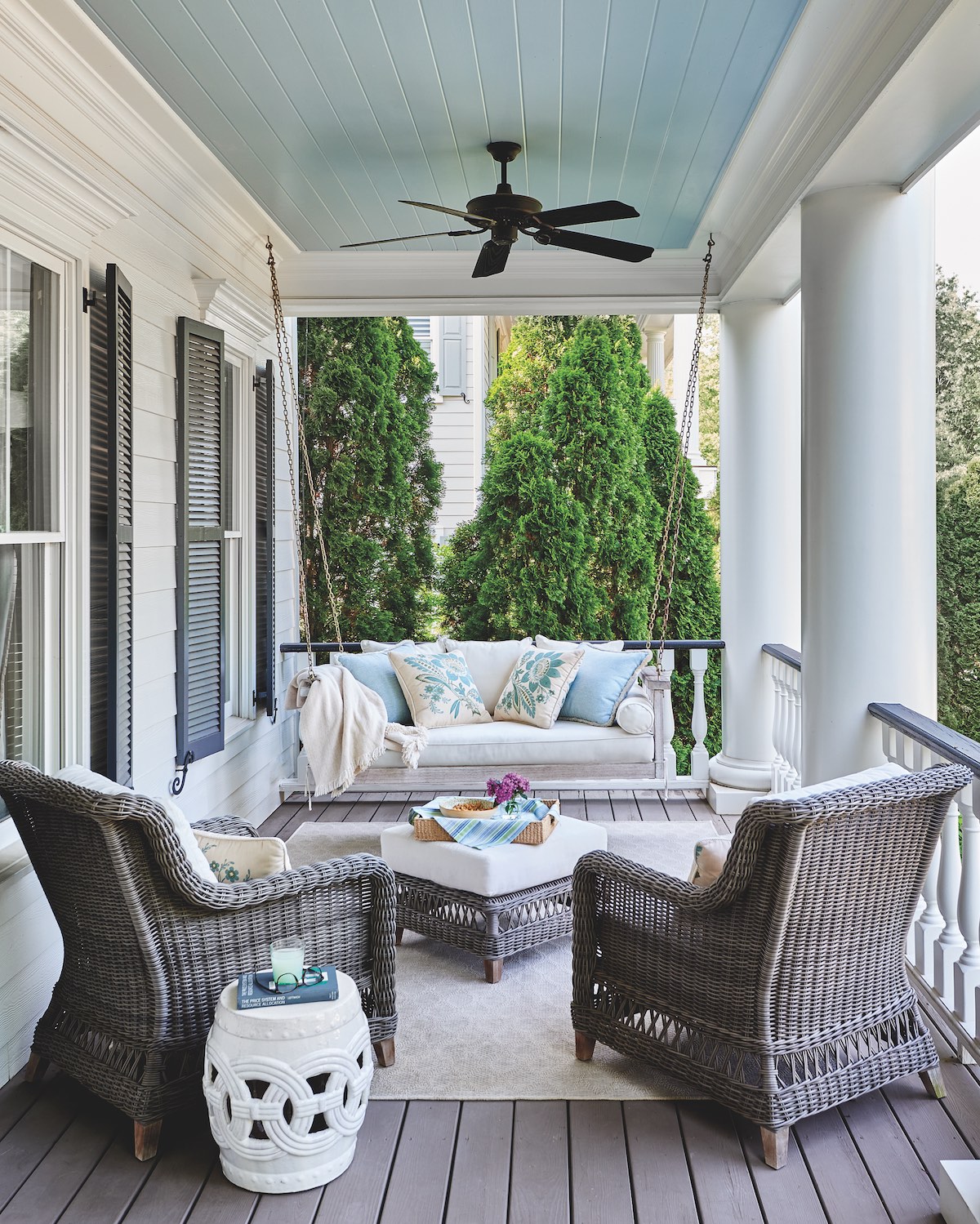
Photo by Dustin Peck
On this Raleigh, North Carolina, front porch, Nellie brought in outdoor furniture by Kinglsey Bate. The rug is by Couristan, and the throw pillows are Home Couture.
What were some of the challenges you faced when designing a capsule collection? Were you surprised by anything during the process?
When I created my proposal, I thought I knew exactly what I was doing. Turns out I was humbled by a big learning curve when it came to the manufacturing process. I made two visits to the Sherrill factory and was so amazed. I think it’s beneficial for anyone in the design industry to physically see how furniture is made. I have such a new understanding and appreciation for it now. Charles Sherrill told me the average piece of furniture passes through 75 hands before it’s completed. So you see the process of how something starts and how it finishes. And it’s just amazing. Seeing people hand-tying, sewing, et cetera, was a really wonderful and interesting experience for me. My biggest challenge was proportion. I initially thought I could just compare sofas and chairs that I liked for proportions, but I quickly learned that slope/pitch/arms, et cetera, completely change the measurements of a piece.
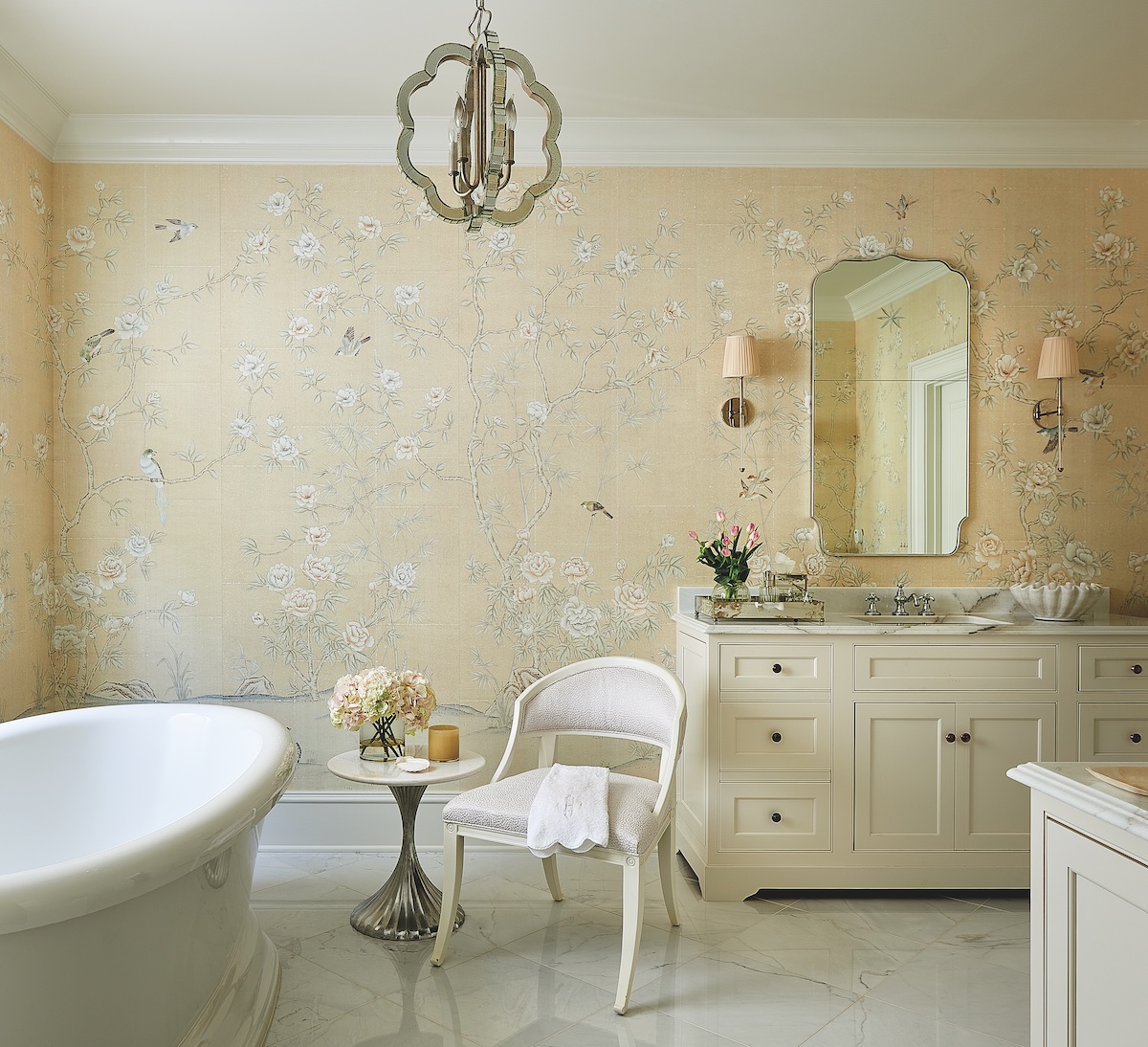
Photography by Dustin Peck
Opting for a mural wallcovering by Mural Source, Nellie designed this primary bath with tranquility and elegance in mind. For lighting, Nellie selected a Made Goods chandelier and Visual Comfort & Co. sconces. The side chair is the Inese by Mr. and Mrs. Howard for Sherrill and the mirror is Mirror Image Home.
You have two young sons. How has motherhood affected the way you design?
It’s one of those cliché things where everyone tells you, “You can’t really understand it until you’ve done it.” And it’s so true. Becoming a mother explodes every aspect of your life in a way you just can’t anticipate until you experience it. As far as working, I feel it’s actually made me more productive because I never know when I’m going to get the call that I’ve got a sick kid and I’ll have to be out of the office for an unknown amount of time. I’m fortunate enough to have a very understanding boss (my mom!). It’s also given me a different perspective on how I approach my projects. Not only do I want to create beautiful homes, but I want to make my clients home a sanctuary, a safe haven, and a place where they can make memories with their loved ones. A place to feel relaxed and comfortable while enjoying beautiful things.
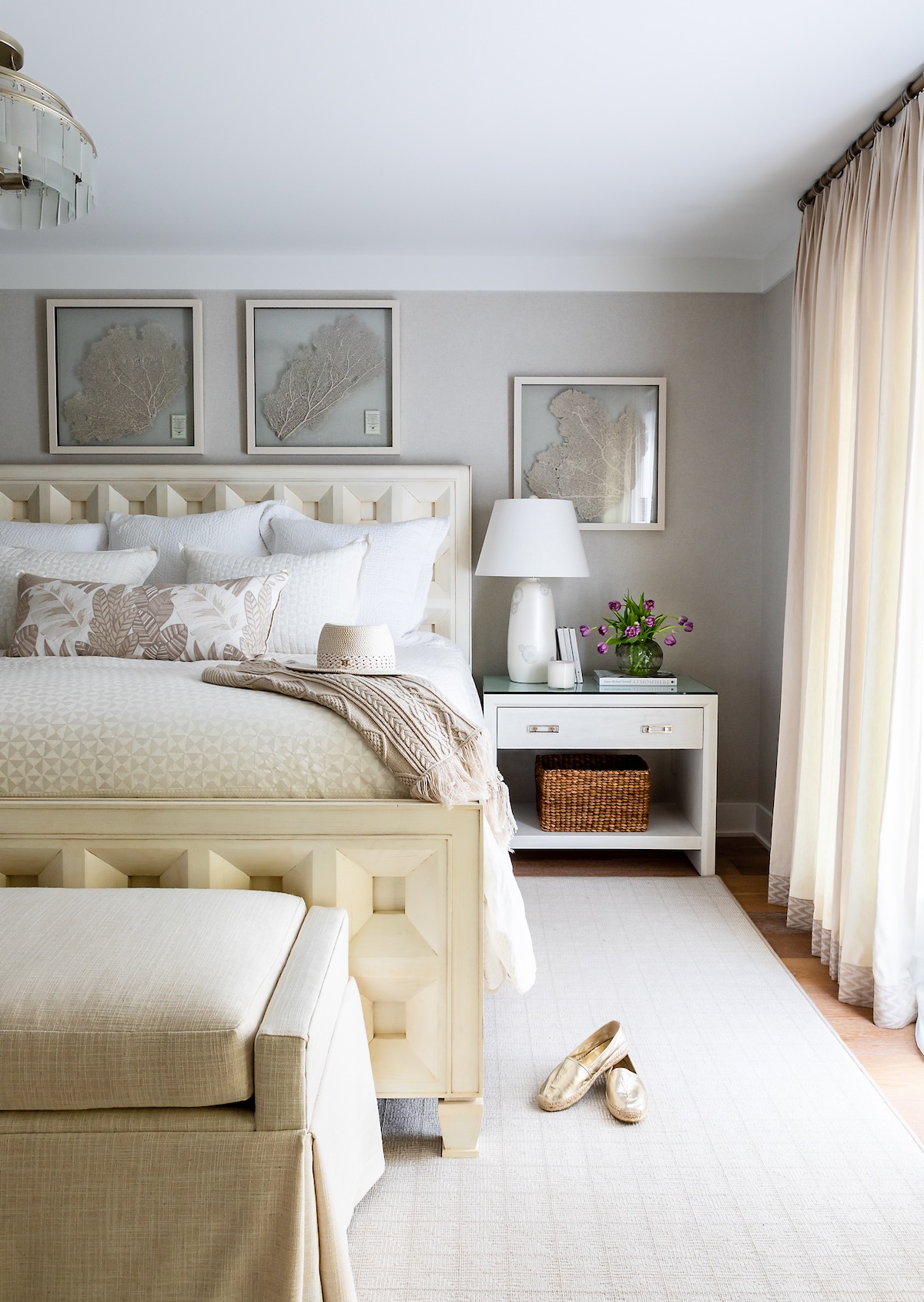
Photo by Muriel Silva
In this Ponte Vedra, Florida condominium project, Nellie anchored the bedroom using the Vice Versa bed by Mr. and Mrs. Howard for Sherrill. The rug is by Stark; the bed linens are by Peacock Alley, and the bedside table is by Mitchell Gold + Bob Williams.
What are some of your favorite things to do when you’re not designing?
We are fortunate to live just a ten-minute walk from the beach. So on the weekends, I love to take my boys out for a walk either down to or near the beach. They love to hunt for trucks along the way. I also used to bake all the time, so I’m trying to get back into my routine of baking a fresh loaf of bread Sunday mornings.
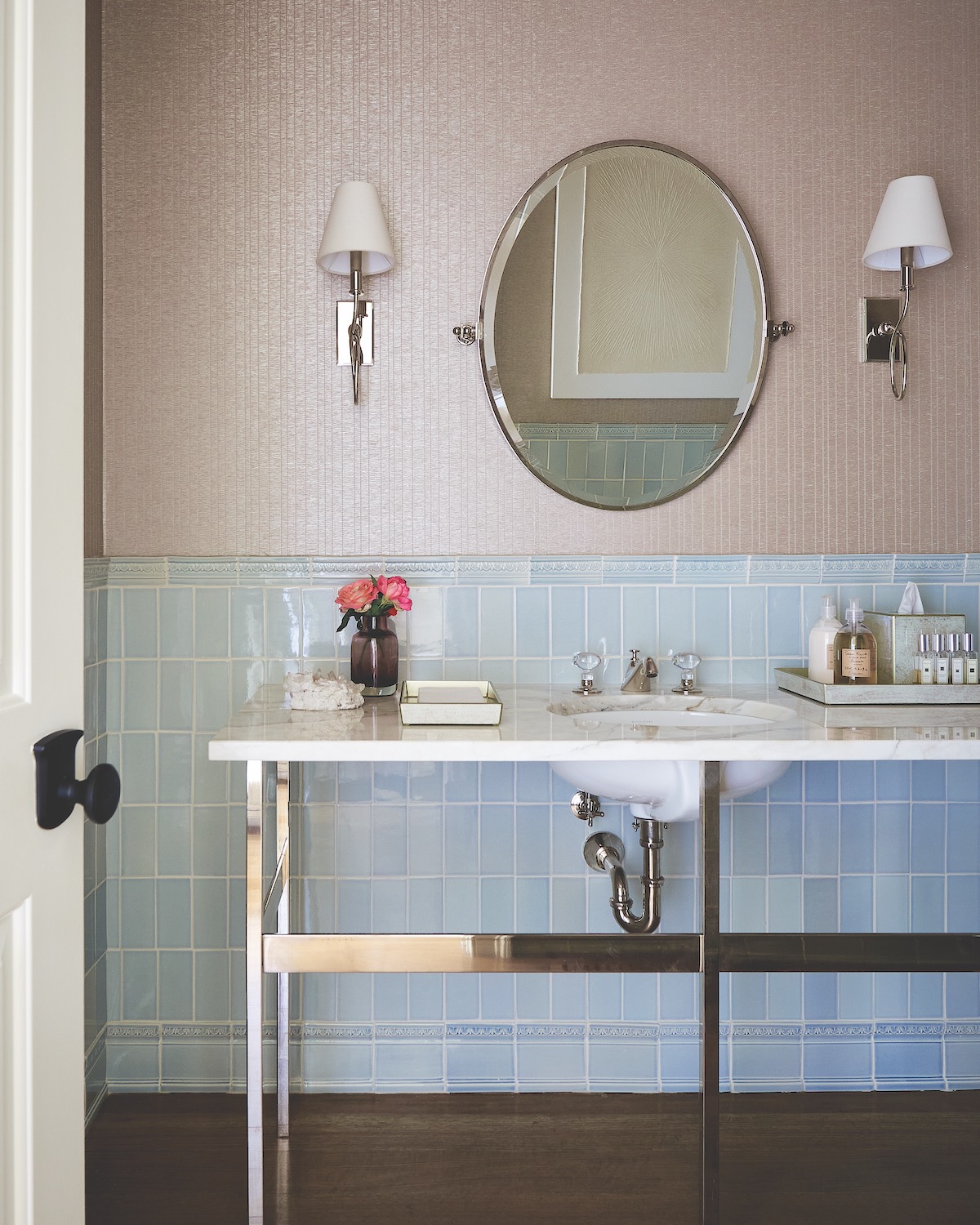
Photo by Dustin Peck
Working with her client’s existing tile, Nellie added a Cowtan & Tout wallcovering and Visual Comfort & Co. sconces to refine the look and feel of the bathroom.
What is something else you’d like to achieve in your career? What’s next for Nellie Howard Ossi?
I have really enjoyed the process of product design. I would love to collaborate with someone like Annie Selkie to produce a collection of beautiful bed linens and rugs. The ultimate “one-day” dream, of course, is Visual Comfort.
By Ashley Hotham Cox


